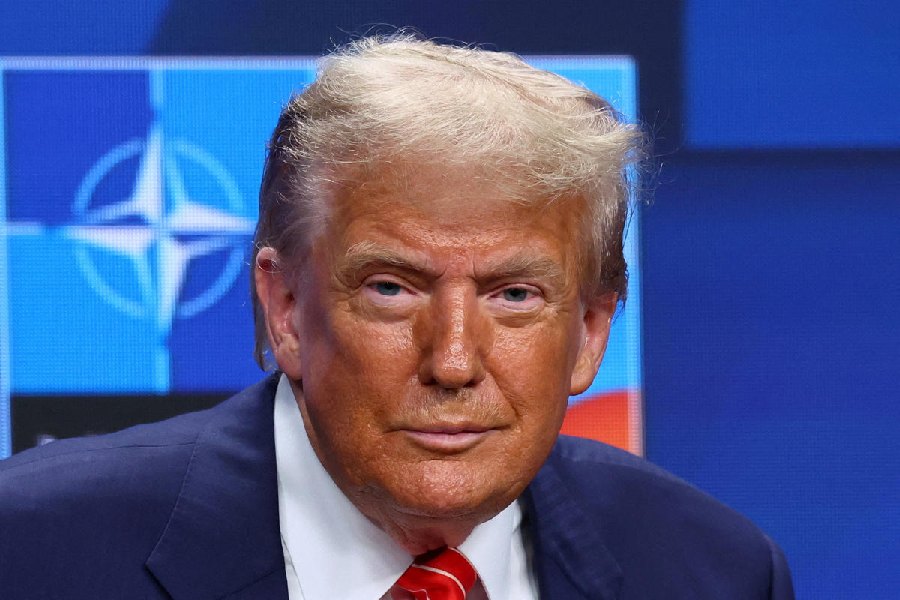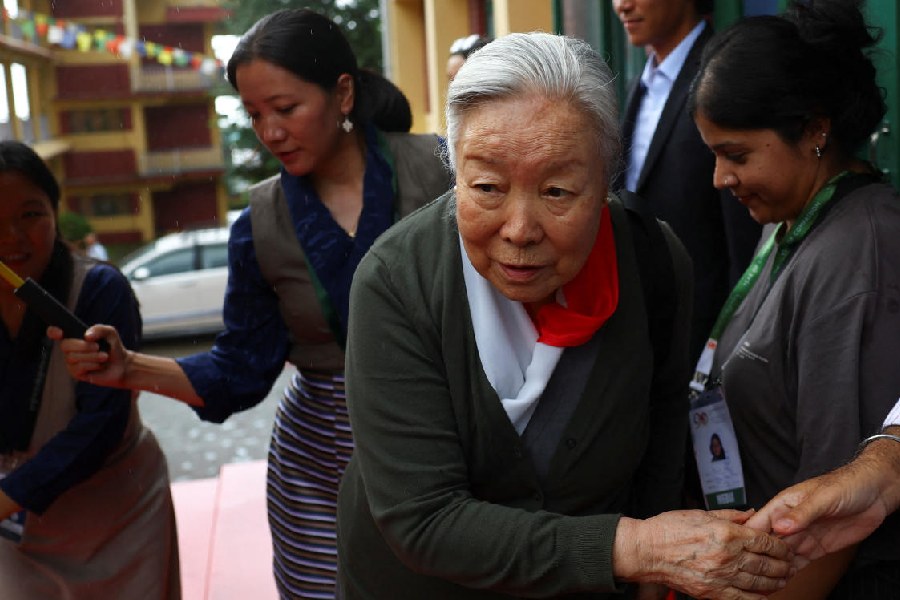 |
Nabhendu Sen’s exhibition This cradle of humanity at the Academy of Fine Arts had 33 paintings, mostly oil on canvas along with some works in acrylic. He seems to enjoy depicting figures in space and is a painter of pure impulse. But then, there is also a stylist in him who likes to render slender, delicate and elegant forms in a variety of moods and atmosphere. There is a dreamlike quality as his works move from reality into the realm of fantasy. In Choi choi, a slim girl in a saree calls the ducks home from the edge of a pond as the shadow of evening spreads its wings. In Little ark, a small boy sails carelessly on a folded paper boat. In Ghu ghu soi, Durga cradles Ganesh on her reclining body. There are also scenes of turmoil and violence where he has taken the events to the level of visual mythology. He is an excellent colourist who takes advantage of his draftsman’s hand. The lone landscape, Virgin Beach, makes the viewers yearn for more.
Dipak Banerjee’s exhibition of paintings Beyond Space and Time at Galerie 88 will be remembered for its sensitive drawing, rich iconic content and meticulous use of colours. He is one of the last exponents of neo-Tantra art that had been launched by Nirode Mazumdar in 1950s. Mazumdar’s pictorial ideas had spread like wild fire throughout India. By 1980s, however, the movement petered out. The cult of Tantra, however, is much older than Harappan civilisation and has affinities to ancient fertility rituals of pre-civilised Egypt and West Asia. Banerjee stirs up archaic imagery that lies buried in the darkest depth of the human mind. He treats and makes his own canvases, applies earth colours, vegetable dyes and gold and silver powder to get the effect of ancient icons. He uses geometric shapes like the circle, triangle and square to indicate the Mandala, Jatra and the male and female principles of Purusha and Prakriti. They are depicted with a flare for details. Then there is the symbolism of Vipareet Bihar where the feminine Shakti (power) is active on the animal world. Using such subtle symbolism, Banerjee has inserted divine beings from the Brahmnical pantheoon. This has drained the paintings of their universal tantra content and replaced them with images from popular religion.
Like the protagonist of Jesus Christ’s parable of The prodigal son, NRI artist unashamedly keep returning to India not in search of roots but to get a large chunk from the permanent resident artists’ “rich cake”. The few who are in the mainstream of contemporary Western art like sculptor Anis Kapoor never returns to South Asia. Amal Ghosh, an NRI artist, had gone to Britain as Chintamani Kar’s prodigy. He had done his post graduation in Central St Martin’s School of Arts and Design, London. His exhibition A Space so Rare at Galerie 88 had several very large transparent watercolours of the English variety. He is essentially a figurative painter, who depicts multicoloured faces and human bodies in different contortions dribbling with paint, as if they had just finished enjoying the festival of colours. Then there is the solitary figure of a person surrounded by nature and the hefty thighs of women flowing down beyond the knees. There seems to be no emotions behind the work.










